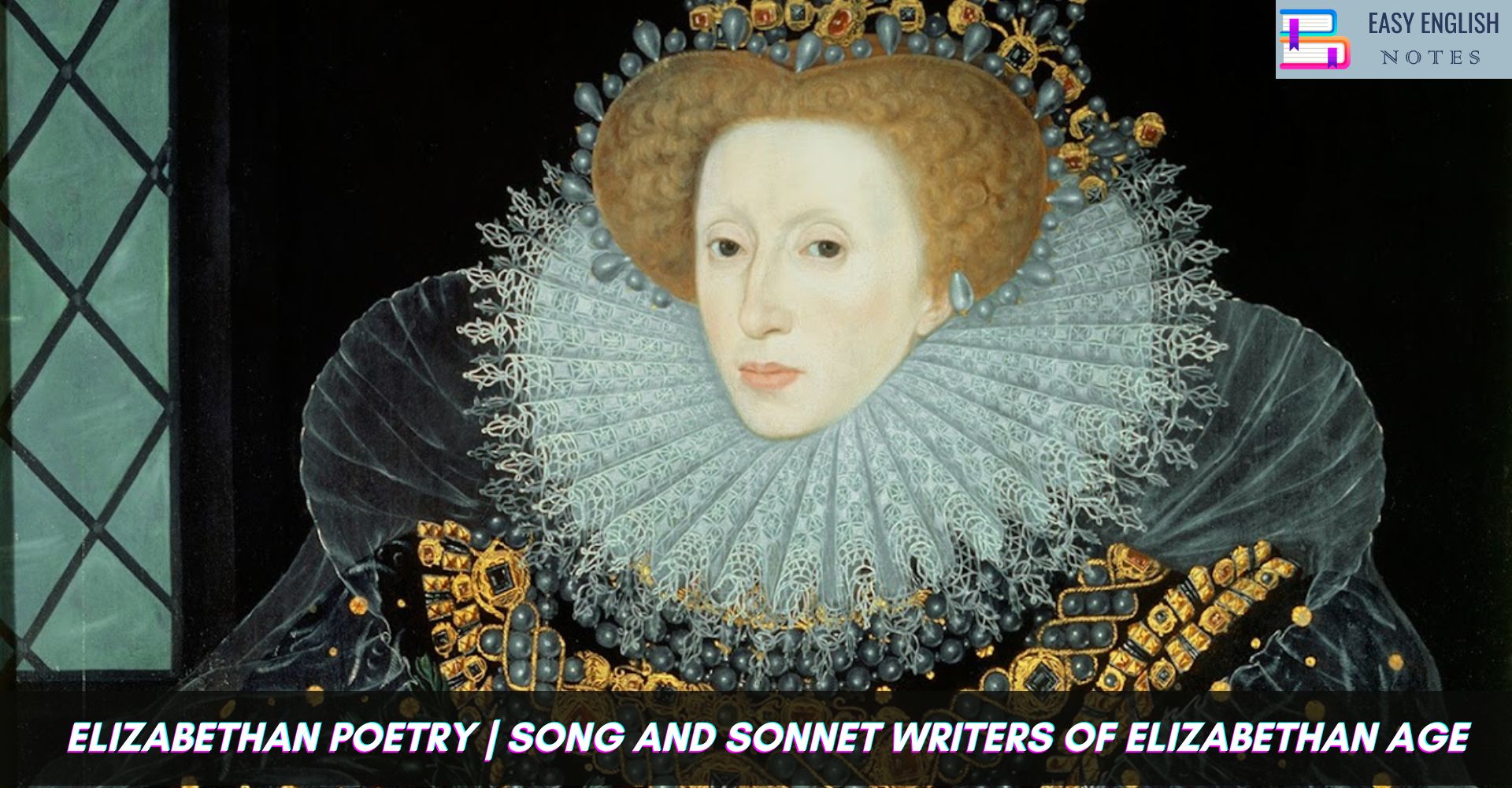Elizabethan England was suited to the growth of highly imaginative and lyrical poetry. It begins with the first efforts of Wyatt and Surrey. It continues through the dramas of the age. It also appears in the numerous miscellanies of the period. The lyrical impulse is carried on without a break into the melodies of Campion and the darker moods of Donne. The forms of the lyrics are many and its notes are musical and natural. Sonnet is an interesting sub-species of lyric. The three different kinds of poetry which helped in the development of the lyric during the Elizabethan Age were the courtly verse, the ballad and the sonnet.
- Sir Thomas Wyatt: Sir Thomes Wyatt is an influential and well- travelled courtier of king Henry VIII. He is an interesting figure in the history of English poetry. He is chiefly remembered as the importer and naturaliser of Italian Sonnet form. It was he who paved the way out of the material chaos and amorphous versification into which English poetry was landed by the followers of Chancer. The sonnets of Waytt are thirty in number. He broke from the medieval tradition and introduced for the first time the Renaissance note into English poetry. The first object of Wyatt was to restore the English verse, the nobility and the harmony it had lost. Besides the sonnet form, he also introduced into English the Italian terzanima and ottava rima.
- The Earl of Surrey: The Earl of Surrey was a disciple of Wyatt. He carried further the vogue of sonnet writing and gave a new turn to the sonnet, Instead of adopting the Petrarchan form accepted by Wyatt, he perfected the new form which Shakespeare later on used with ease and grace. His sonnets were love sonnets written to Gerladine or Lady Elizabeth Fitzgerald. They were characterised by a note of melancholy and sadness. They embodied in their structure the love-lorn cries of the poet’s heart. Surrey’s chief contribution is that he introduced blank verse into English. He is English Virgil. The real achievement of Surrey lies in the mastery of the form and the perfect ease with which he harmonizes the tone and the sentiment in his poems. His style is polished and refined. All traces of Wyatt’s roughness and archaism have been smoothed out.
- Thomas Sackrille: Sackrille was a great humanist. He is the only writer after Wyatt and Surrey and before Spenser who left memorable verses behind him. He dedicated himself to the medieval tradition. There is the same allegory, the same dream conversion, and the Chancerian stanza. It is the excess of misery and gloom that is found in his poems Sackrille is, indeed, a connecting link between Chancer and Spenser.
- George Gascoigne : Gascoigne was a mediocre. He has the credit of being first in many fields. “The Steel Glass” is the best known work of Gascoigne. It is a vigorous satire on the corrupt ways of living and foreign manners of the young man of the day. It is the first regular satire in English verse. He advocates the purity of the language and the elimination of foreign words. So, he is a nationalist Gascoigne was a literary “Jack of all trades, but master of none”. His long poems are dull and monotonous. His blank verse has neither variety nor freedom. He is at his best in his short lyrical pieces.
- Edmund Spenser: Spenser is the true father of the Elizabethan Sonnet. His Amoretti sonnets are still one of the best collections, of sonnets. Spenser departed from Petrarch in more than one way. He used three quatrains and a couplet instead of Petrarch’s octave and sestet. His sonnets tell a story of love without sin or remorse. They describe love’s sigh. Instead of ardent passion, the Amoretti sonnets have charm of harmonious and pure atmosphere.
- Sir Philip Sidney: Sir Philip Sidney is a prince among Elizabethan lyric writers and sonneteers, with the exception of Shakespeare, he is the greatest. His most important work was his sonnet sequence “Astrophel And Stella”. It had one hundred and eight sonnets and eleven songs. In it, Sidney told the story of his unfulfilled love for Penelope. Penelope is Stella (a star) and Sidney himself Astrophel (star-lover). Penelope had been engaged to Sidney when she was about fourteen. Later she was married off by her father to Lord Rich. Thus poured out the agony of his despair into the mould of the sonnet. These sonnets are all an effusion of real passion.
Also Read :
- Compare Hamlet with Macbeth, Othello and other Tragedies
- “The Pardoner’s Tale” is the finest tale of Chaucer
- Prologue to Canterbury Tales – (Short Ques & Ans)
- William Shakespeare: Shakespeare’s sonnets and songs are more immortal and universal than the sonnets of any other writer mentioned above. He wrote about 154 sonnets. The first one hundred and twenty six sonnets are addressed to a handsome youth. Sonnets 127-152 are addressed to an unknown dark lady who betrayed the poet for a young man. Generally, Shakespeare uses the pattern of rhyme scheme used by Surrey. His sonnets are built up of three quatrains with a final rhyming couplet.
PLEASE HELP ME TO REACH 1000 SUBSCRIBER ON MY COOKING YT CHANNEL (CLICK HERE)











